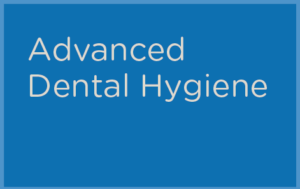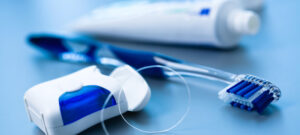

Advanced dental hygiene is an attitude of being proactive – our hygienists’ goal is to help our patients achieve and maintain their optimal oral health!
Healthy gums create a tight seal around the neck of the tooth, helping to prevent bacteria from causing an infection. With over 300 types of bacteria present in the oral cavity, that is quite a job. There are two main types of gum disease: reversible, and irreversible.
Gingivitis is a reversible condition caused by irritation to plaque, a white film of bacteria at and below the gum line. Diligent self care at home is frequently all that is necessary to restore health, unless the plaque calcifies into tartar. At that point, a professional teeth cleaning (aka, prophy) will be required.
Periodontitis occurs when prolonged gingivitis goes untreated. The swelling from gingivitis loosens the seal around the neck of the tooth, permitting bacteria access to the root of the tooth and jaw bone. Bacteria excrete a harmful toxin that over time causes the periodontal ligament to dissolve and the teeth to loosen. Neither the body’s own immune response nor an antibiotic taken in pill form can reverse the infection; the bacteria have literally burrowed into the tooth and gum!
Some of the bacteria most notorious for causing bone loss around the teeth have also been cultured in atherosclerotic plaques in the arteries. https://caugheydds.com/2014/10/10/scientific-link-between-periodontal-disease-pathogens-and-blood-vessel-function/. Another category of bacteria, more often implicated in gum swelling, has been cultured in the colon polyps of cancer patients. https://www.cancer.gov/news-events/cancer-currents-blog/2024/colorectal-cancer-fna-c2-bacteria. Lastly, one specific bacteria found in high concentrations relatively in a vacuum of other bacteria point to possibly latent endodontic (root canal) infections needing treatment. https://pubmed.ncbi.nlm.nih.gov/16887563/
Salivary Testing
A simple 15 seconds of swishing it is all it takes to start the testing process. Usually within a week results are in, and a customized care protocol is created to eliminate the most virulent bacteria at the source! Following periodontal treatment 4-6 weeks later, the test is repeated and at that point, a new plan will be made for what maintenance would be appropriate.
Laser Disinfection
While traditional treatments of mechanical removal of bacteria have an excellent track record of improving the course of periodontal disease, some cases will receive additional benefits from treating the gum pockets with laser. Since the CO2 laser is attracted to water, it targets the bacteria in the otherwise hard to reach nooks and crannies of the tooth root, and ablates them. Further, the gum tissue lining the periodontal pocket is treated, allowing the gum tissue to then heal and attach more tightly to the tooth root, making the pocket more shallow and hiding place to fewer future bacteria.
